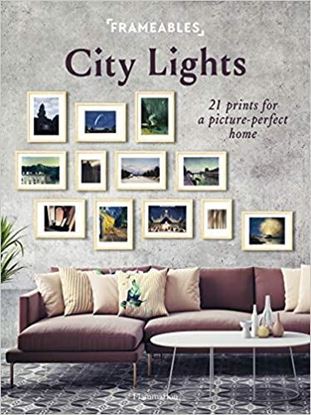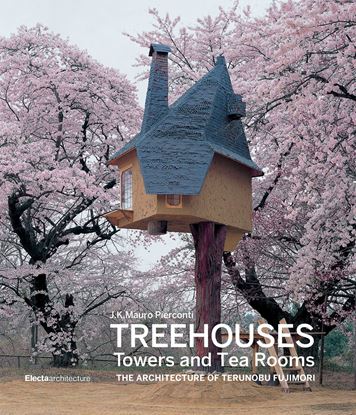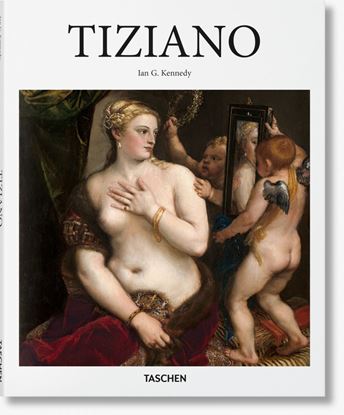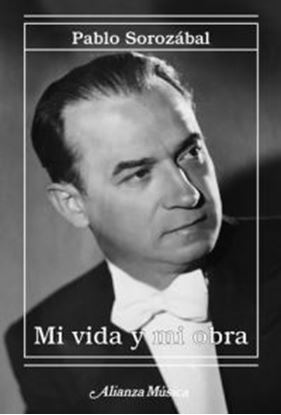

CITY LIGHTS (B) (OF3)
Introducing the first collection of art books with detachable prints to decorate your walls. Everything you need to create your own private gallery at home! Nightscapes that range from a fireworks display in Rome by Jacob Philipp Hackert to the Louvre from across a Parisian bridge by Maximilien Luce to a moonlit New York streetlamp by Georgia O'Keeffe.
Each book contains a curated selection of twenty-one high-quality reproductions that can be easily removed from the book, framed in a standard-size frame, and displayed in the home. Step-by-step tips for grouping the works to create a harmonious gallery add an interior designer's touch to the ensemble. Graphic, colorful, or abstract; paintings, engravings, or drawings--each work of art is explained on the back of the print. Interesting details about the style of painting, the particular work of art, and biographical information about the artist are accompanied by a "frameable fact" that helps you understand the context of that particular work in the history of art. In addition, suggestions for where you can go to see additional examples of the artists' works allow the reader to expand his or her experience and learning.
Artists include Edward Hopper, William Turner, Camille Pissarro, Paul Klee, Claude Monet, Vincent van Gogh, Pierre Bonnard, Giorgio de Chirico, Georgia O'Keeffe, René Magritte, and Wassily Kandinsky.
995
796
MI VIDA Y MI OBRA (OF2)
Fue Sorozábal el músico más popular en el Madrid de mitad del siglo XX.
Su música tenía gancho, era chispeante, castiza, muy madrileña.
Era además original y moderna en su momento, sin que supusiera una ruptura con esa entrañable y larguísima tradición española de la zarzuela: o sea, tenía eso que hoy se busca en las generaciones nuevas de compositores sin hallarlo nunca.
El arte lírico de Sorozábal no cayó jamás en las ramplonas orquestaciones de otros músicos de zarzuela de su momento, período de franca decadencia artística del género.
Y, por si fuera poco, tenía un agudo sentido teatral en la equilibrada mezcla de elementos cómicos y de carácter, con una fuerte vena lírica, en él tocada de humana cordialidad y nostálgica ternura.
Junto a lo madrileño hay otro polo en la obra de Sorozábal, este más auténtico en su raíz: lo vasco, presente muchas veces en composiciones no teatrales para voz solista o para coro.
500
400
DISEÑO GRAFICO DIGITAL
En la era de la imagen, el perfil de diseñador gráfico se ha convertido en uno de los más demandados entre los profesionales generadores de contenidos digitales.En estos tiempos digitales, el diseñador gráfico debe explorar las posibilidades creativas de cada medio y optimizar la composición gráfica para lograr una mejor comunicación visual.
Aunque la mayoría de los proyectos de diseño gráfico se elaboran con herramientas digitales y programas de diseño, ello no implica necesariamente que estén bien preparados para su correcta difusión en pantallas digitales.A las competencias específicas del diseño gráfico tradicional es preciso añadir la creación de diseños optimizados para su difusión final en los nuevos medios y dispositivos digitales (sitios Web, redes sociales, smartphones, tablets, soportes publicitarios online, canales de marketing, etc.).Este libro aúna los conocimientos básicos de diseño gráfico tradicional con contenidos específicos para diseñar en la nueva era digital, como el uso de tipografía digital, el tratamiento informático del color, las técnicas de vectorización, la optimización de imágenes para la Web, el cálculo de la resolución más adecuada para cada medio, entre otros temas.Incluye, además, numerosos ejemplos a toda página de proyectos profesionales de diseño gráfico digital aplicados, con colaboraciones de renombrados diseñadores y de estudios de diseño gráfico de todo el mundo.
2,200
1,760














